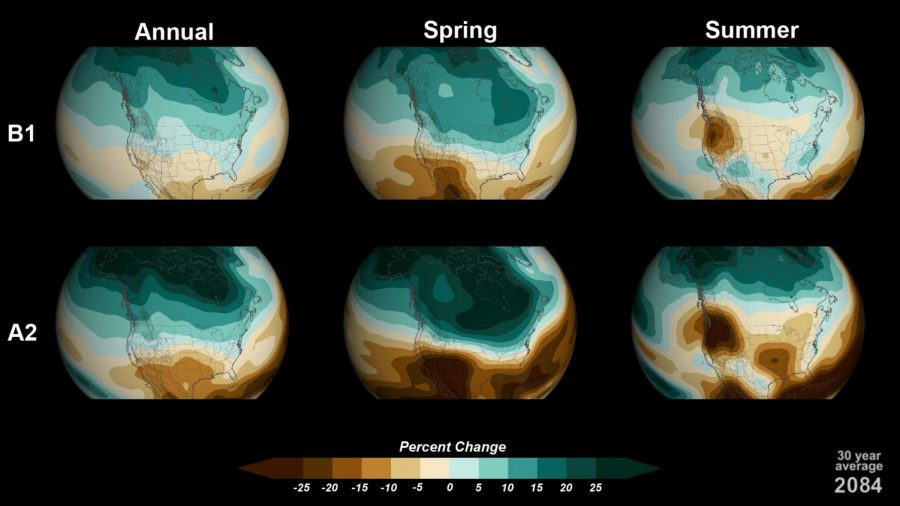And now, the weather
January 28, 2021
While the recent days of blue skies and relatively decent temperatures have been enjoyable, they are indicative of a growing concern to the unpredictability of weather due to climate change. Across the nation, people have been noticing the differences. In the North Atlantic, people have faced an increased number of hurricanes, and the hurricane season has expanded, starting in June and ending in November. The Midwest and South have experienced longer and more intense droughts, along with widespread tornados. Here in the Northwest and the North Atlantic, people have unexpected onslaughts of rain and snow in concentrated time periods, rather than over the normal span of several months.
NASA has launched a U.S Global Change Research Program, the goal of which is to analyze and interpret changes in the environment (including land and water resources, biodiversity and human health) and predict the trends in these areas for the next 25 to 100 years. Every four years, NASA presents a report from this program to Congress—currently, they plan to release the fifth national climate assessment in 2023.
Their predictions show that rainfall averages will increase in the next century across North America, with the Northern states experiencing a positive percentage increase (more rain) and the Southern states experiencing a negative percentage change (less rain). Both of these pose their own problems. What is worrying is the amount of change that is expected. NASA has focused on comparing two scenarios: one where climate change is recognized and dealt with on a global scale, leading to lower carbon emissions, and one that is not. In the situation with higher carbon emissions, the percent change in rainfall is upwards of 25 percent, for both the North and the South.
Locally, the unpredictability of rainfall is already being felt in Oregon. In early January, flood and even monsoon warnings were sent out to those in the Portland area for several days. Many houses experienced water damage, power outages and even some fallen trees. And yet, most of Oregon is still experiencing a below average rainfall, causing many regions to fall into the category of “drought stressed,” which could potentially lead to more problems in the future.
Major policy changes are needed to reduce carbon emissions in order to keep the Earth in a habitable environment. The US has rejoined the Paris Accords, which is a step in the right direction, but even more aggressive regulatory measures must be put in place to monitor large companies that produce the majority of carbon emissions. Whether Congress is willing to, in their eyes, sacrifice the economy for the environment is yet to be determined.


